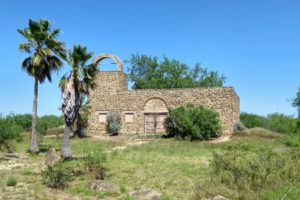Tulip Festival time in Holland is starting to open up after the Covid-19 shutdowns, but a number of the festivities were still limited, especially the Dutch dancing that would have been a treat to see. But . . . we did get to see the exhibit in this post that shows the variety of dress styles of the provinces in the Netherlands. Since we’re going back in time with these costumes, let’s look at some history of the Netherlands through the clothing styles.

Official festival artwork had its start in 1982, and the first 2 posters were both designed by Steve Frykholm whose Herman Miller Picnic posters are displayed in the Smithsonian and Museum of Modern Art.




provinces in the Netherlands
As we start to look at what the Dutch people wore in the late 1800s to early 1900s in the different provinces, this map of the Netherlands will help us understand this country better. Much of the land opens out to the North Sea (England is to the west), and rivers run throughout the nation’s landmass. North Holland actually looks like a peninsula with the 2 lakes on its eastern side. South of the Netherlands is Belgium and east is Germany. No natural boundaries separate these countries.

We’ll see some more about the Dutch costumes worn by those dancing during the festival later in this post, but this poster has some good information about what we’ll be seeing now.















Dutch dance tradition
Since the start of the Dutch dance tradition in the 1930s, thousands of local residents have participated and learned the dances. Dancers are dressed in bright costumes and klomp their way through traditional dances in their wooden shoes.


In 1933, high school gym teach Ethel Perry trained 12 students to perform Dutch folk dances. They were called the “Dutch Villagers,” and they performed to the tune of “Where, Oh Where Has My Little Dog gone?”. By 1935, a group of local high school girls performed for the first time at the Tulip Time Festival. These “Klompen Dancers” dressed in delph blue costumes with white organdy caps and aprons.

As more Dutch history was explored over the years, more costumes were added and revisions made.

In the 1980s Zeeland High and Hamilton High Schools joined the Dutch Dance program. At the beginning of the decade, 800 dancers were participating. By the middle of the decade, the combined programs had nearly 1400 dancers.

In just 10 years (2019) the program grew to over 130 dancers. In 2018 another program for middle schoolers was piloted called Middle Dutch Dance. These boys and girls also got their own costumes representing the province of Zeeland. In 2020, the Middle Dutch Dance program featured 68 dancers.
public art project
The public art project started in 2019 for Tulip Time’s 90 anniversary with 45 pairs of large wooden shoes staged in tulip beds throughout parks in downtown Holland.

While wooden shoes are displayed for such a short time, they continue being part of the the community’s festive spirit.




a little history (from Wikipedia)
Netherlands literally means “lower countries” in its reference to a low elevation and flat topography; only about 50% of its land exceeds 3.3 feet above sea level, and nearly 26% of the land falls below sea level. This lower land has been reclaimed from being under water since work started on this project in the 14th century.
With a population of 17.4 million people, all living within a total area of around 16,100 square miles—of which the land area is 12,900 square miles—the Netherlands is the 16th most densely populated country in the world and the 2nd most densely populated country in the European Union. At the same time, it is the world’s 2nd largest exporter of food and agricultural products by value, because of its fertile soil, mild climate, intensive agriculture, and inventiveness.
In 1648, the Dutch Republic won its freedom from Spain with the help of England; with 7 provinces, it formed a confederation.
In the Dutch Golden Age, spanning much of the 1600s, the Dutch Empire grew to become one of the major seafaring and economic powers, along with Portugal, Spain, France and England. Their work in science, the military, and art (especially painting) were among the most acclaimed in the world.
By 1650, the Dutch owned 16,000 merchant ships. The Dutch East India Company and the Dutch West India Company established colonies and trading posts all over the world, including ruling the northern parts of Taiwan between 1624-1662 and 1664-1667. The Dutch settlement in North America began with the founding of New Amsterdam on the southern part of Manhattan in 1614. In South Africa, the Dutch settled the Cape Colony in 1652. Dutch colonies in South America were established along the many rivers in the fertile Guyana plains. In Asia, the Dutch established the Dutch East Indies (now Indonesia), and the only western trading post in Japan, Dejima.
Many economic historians regard the Netherlands as the first thoroughly capitalist country in the world. In early modern Europe, it had the wealthiest trading city (Amsterdam) and the first full-time stock exchange. The inventiveness of the traders led to insurance and retirement funds, as well as such phenomena as the boom-bust cycle, the world’s first asset-inflation bubble, the tulip mania of 1636–1637, and the world’s first bear raider, Isaac le Maire, who forced prices down by dumping stock and then buying it back at a discount.
The Belgian Revolution at home in the mid-1800s and the Java War in the Dutch East Indies (1825-1830) brought the Netherlands to the brink of bankruptcy. However, the Cultivation System was introduced in 1830; in the Dutch East Indies, 20% of village land had to be devoted to government crops for export. The policy brought the Dutch enormous wealth and made the colony self-sufficient.
coming to Michigan (from town’s booklet)
Also in the mid-1800s as the population numbers grew, ownership of land became harder and harder. Dreaming of a life without this financial depression and religious oppression, in 1846 Rev. Albertus Van Raalte persuaded a small band of countrymen and their families to board the sailing bring “Southerner” and start a 47-day voyage across the Atlantic.
With their hard work and resilience, the Dutch built the “Holland Kolonie.” Within 6 years, a few hotels, some shops, and growing industry began growing in the Michigan wilderness.
By the early 1860s, Holland was an agricultural port (more information in the previous post) and started Hope Collage. In the early 1870s, 2 railroad spurs stimulated economic development, even through a spark from one of them almost wiped out the bustling town on the same day as the Great Chicago Fire (October 9, 1871). Holland quickly rebuilt their town.
During the 20th century, Holland was known for its furniture manufacturers, the Holland Furnace Company, the J.J. Heinz Company, and the Chris Craft Corporation. “Tulip Time” was born in the 1920s to become one of the nation’s most celebrated flower festivals. Its location on Lake Michigan helped Holland become a destination for vacationers from Chicago and St. Louis as ornate resort hotels and family cottages were built.
As late as the 1950s, around 90% of Holland residents still claimed Dutch heritages, but changes were happening. During the previous decade, Hispanic migrant farm workers began arriving to take jobs in fields and food processing plants. After the Vietnam War, Asian refugees settled here in search of a better life.
military (back to Wikipedia)
The Netherlands has one of the oldest standing armies in Europe when it was first established by Maurice of Nassau in the late 1500s. It was able to remain neutral during WWI, partly because Germany depended on the import of goods through the Netherlands until the blockade by the British Royal Navy in 1916. That neutrality status changed in WWII when Nazi Germany invaded the Netherlands on May 10, 1940. The aerial bombing of Rotterdam forced the main element of the Dutch army to surrender 4 days later. Almost the entire historic city center was destroyed, nearly 900 people were killed, and 85,000 more were left homeless.
The Netherlands abandoned its neutrality in 1948 when it signed the Treaty of Brussels, and became a founding member of NATO in 1949. The Dutch military was part of the NATO strength in Cold War Europe, deploying its army to several bases in Germany. More than 3,000 Dutch soldiers were assigned to the 2nd Infantry Division of the U.S. Army during the Korean War. In 1996 conscription was suspended, and the Dutch army was once again transformed into a professional army. Since the 1990s the Dutch army has been involved in the Bosnian and Kosovo Wars, held a province in Iraq after the defeat of Saddam Hussein, and was part of the fighting forces in Afghanistan.
climate
The Netherlands’ climate is different than I had expected for such a northern country. The predominant wind direction is southwest, which causes a mild maritime climate. Summers are moderately warm and winters cool, and the nation typically has a high humidity. This climate is especially true close to the Dutch coastline, where the difference in temperature between summer and winter, as well as between day and night is noticeably smaller than it is in the southeast of the country. However, we do know that ice skating is popular when the canals freeze.
the people
The Dutch are the tallest people in the world, by nationality, with an average height of 5 feet 11.3 inches for adult males and 5 feet 5.7 inches for adult females in 2009. People in the south are on average about 0.8 inches shorter than those in the north.
According to the U.S. Census Bureau in 2006, more than 5 million Americans claim total or partial Dutch ancestry. In November 2016, around 3.8 million residents in the Netherlands had at least one foreign-born parent.
The official language is Dutch, which is spoken by the vast majority of the inhabitants. In higher level secondary schools, 2 additional modern foreign language skills are mandatory during the first 3 years. Besides English, the standard modern languages are French and German, although schools can replace one of these modern languages with Chinese, Spanish, Russian, Italian, Turkish, or Arabic.
food
One-third of the world’s exports of chilis, tomatoes, and cucumbers goes through the country. The Netherlands also exports one-fifteenth of the world’s apples. In addition, a significant portion of Dutch agricultural exports consists of fresh-cut plants, flowers, and flower bulbs, with the Netherlands exporting 2/3 of the world’s total.
I kept looking for Dutch restaurants and bakeries while we were Holland but couldn’t find any, so I looked online to find out why. The conclusion I found was that because the Dutch were so busy developing trading partners all over the world for so many years and interacting with so many nationalities and their foods, the Dutch people never spent the time to develop their own food tastes, choosing instead to import food.
+ + + + + + + + +
Time to start back home now. Wonder what we’ll find along the way.




